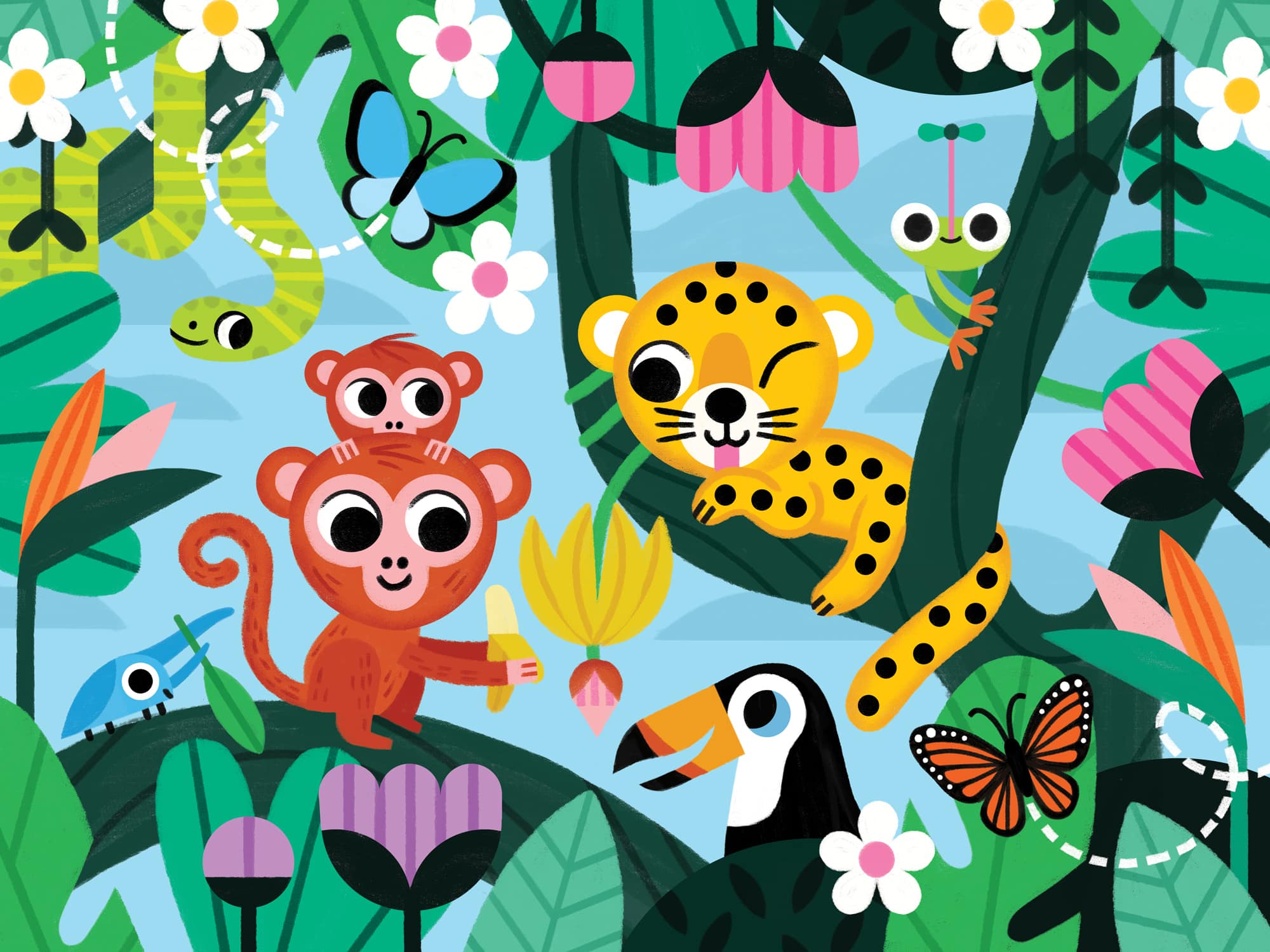How to illustrate kids’ puzzles: from simple to complex!
Published on 17/04/2024How to illustrate kids’ puzzles: from simple to complex!
Teacher: Bhavi Patel, Advocate Art Agent/ ITSme Learning
Almost every theme and subject matter can be adapted to both kid and adult age groups; the key element that differentiates the two is the level of difficulty. This is determined by how much detail is in the piece. Kids’ puzzles tend to focus on one or two main, big elements which are easy to piece together. Each puzzle piece will hold a significant part of the design that helps the target audience piece it together. In a puzzle design aimed at adults, the amount of detail is exponentially higher. Usually, adult puzzles have multiple focal points, and due to the higher number of pieces, the finer details are more difficult to put together.
As you look through the examples in this blog, you can also notice that, alongside detail, the textures and additional finishing also play a part in determining which age group a puzzle is best suited to. Kids’ puzzles work best using a vector style, as this emphasises the simplicity in the design and overall product, as seen in Kevin Payne and Sara Nicely’s pieces. Both designers create solid focal points and recognizable shapes, making the puzzle easier to work with. In contrast, Hannah Abbo’s and Nichola Cowdery’s designs hold more depth through their use of textured brushes and finer lines, creating more delicate details within the bolder, more interesting shapes and overall design.
For more free tips for how to improve your creative skills, subscribe to our ITSme Learning Newsletter! Or take a look at our courses here.
Other News
Be A Pro at Curating your Portfolio!
You asked, and we listened! Be A Pro at Curating Your Portfolio; our new course is here! Learn all the secrets to crafting a standout portfolio with 4 Hours of Expert-Led Content! One of the biggest challenges you face in your illustration career is presenting your work in a way that catches the eye of…
Why Using AI in Art Briefs Can Stifle Creativity
Why Using AI in Art Briefs Can Stifle Creativity AI art tools such as Midjourney or Flux are becoming more and more capable, and that fact is impossible to ignore. With these developments, it can be tempting to use AI-generated art as reference material when briefing a project. While AI has its uses, we at…
Mentorship in Review: Transforming Illustrators
Our illustration mentorship program is meant to bring portfolios to a new level, and we mentors were incredibly pleased by the way mentorship program graduate Zhiheng Andy Su completely transformed his portfolio during the spring 2024 session. Over the course of weeks, Zhiheng went from two very different digital and hand drawn styles before to…
Interview with Sally Garland
Sally Anne Garland is a prolific author/illustrator who has been working with both Advocate Art and Caroline Wakeman Literary Agency for many years. Her authored books include The Moon Seed, The Chalk Garden and Poppy’s Perfect Crayons. She has rave five-star reviews from The Guardian, Kirkus, Reading Zone, and more. Here, we ask Sally about…
What Is Comp Shopping? And Why Is It Important?
What Is Comp Shopping? And Why Is It Important?
ITSme Learning Launch a Success at Bologna 2024!
ITSme Learning Launch a Success at Bologna 2024!




